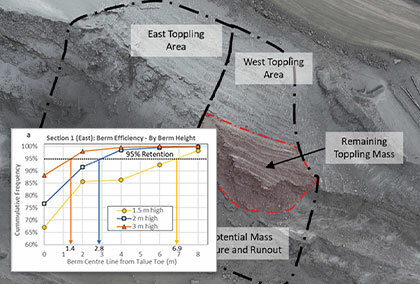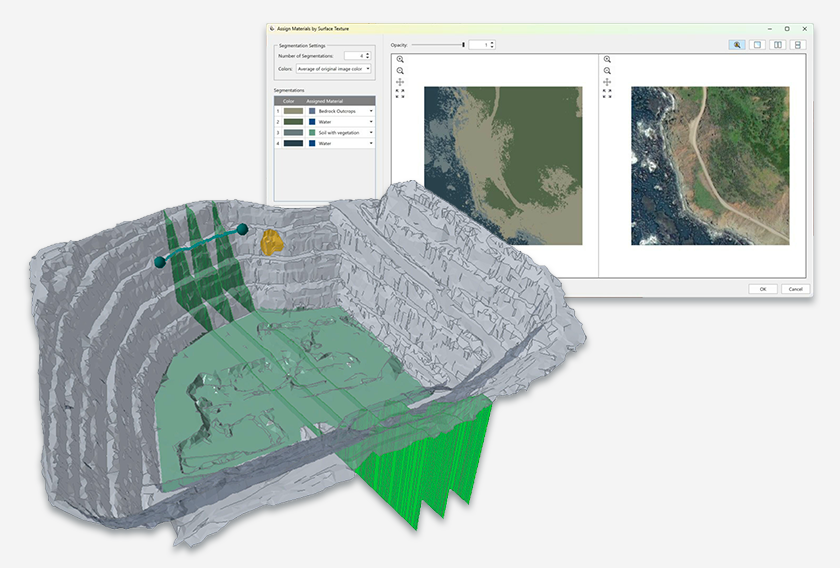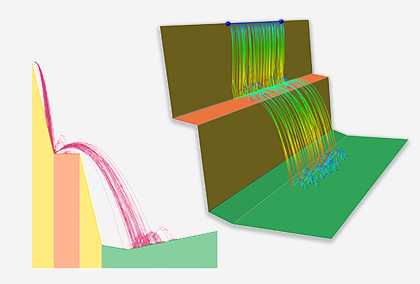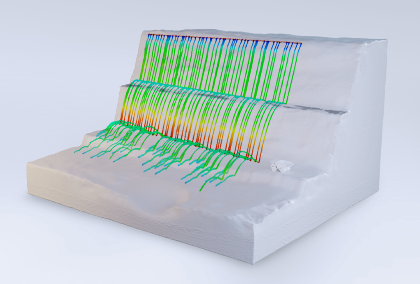The Latest Features in RocFall2
RocFall2 is a dynamic 2D statistical analysis program designed to help you analyze slopes at risk for rockfalls. RocFall2 can be used for transportation, mining and rock slope applications.
Stay up to date with the latest features and integrations that you can incorporate into your geotechnical projects.
March 2022
RocFall2 - RocFall3 Integration
Two-dimensional analyses still form the basis of most rockfall models and RocFall2 continues to be used extensively for the design of protection measures such as barriers and berms. Therefore, it is imperative that RocFall2 integrates with RocFall3. Keeping this in mind during development, it was a top priority to ensure RocFall3 can read and write 2D models quickly and efficiently.
How does RocFall2 -RocFall3 integration streamline your 3D rockfall modelling & analyses?
In the past, engineers wanting to conduct both 2D & 3D analyses would have to spend time creating these models separately. Now with RocFall3, this is no longer the case as it can analyze a RocFall2 model and allow you to extrude it. Simultaneously, properties of the RocFall2 model can also be imported into the 3D model, reducing incorrect movement of properties between 2D & 3D programs.
Like our other 3D programs, Slide3 and RS3, you can now create multiple 2D sections within RocFall3 model. These sections can then be imported into RocFall2 with all the properties transferred, reducing time spent modelling and potential errors while moving models between 2D and 3D analyses.
Step-by-step process of importing RocFall2 files into RocFall3
- Choose the import option Import RocFall2 File
- Enter the extrusion length and how you want to convert the seeders.
- Click OK and the properties and settings are automatically imported into the RocFall3 model.
- Press compute and you can immediately see the 3D simulation of the 2D model.
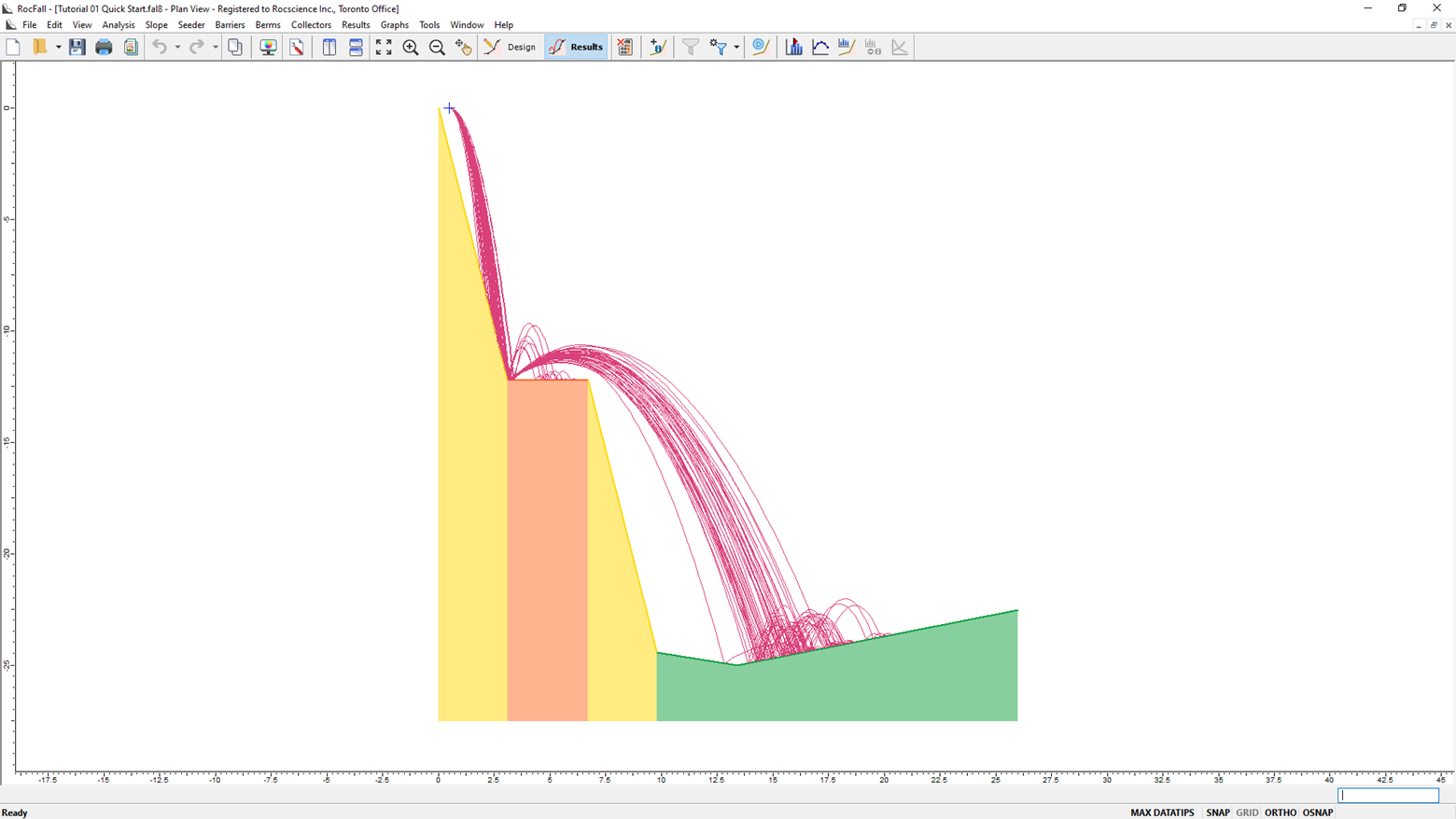
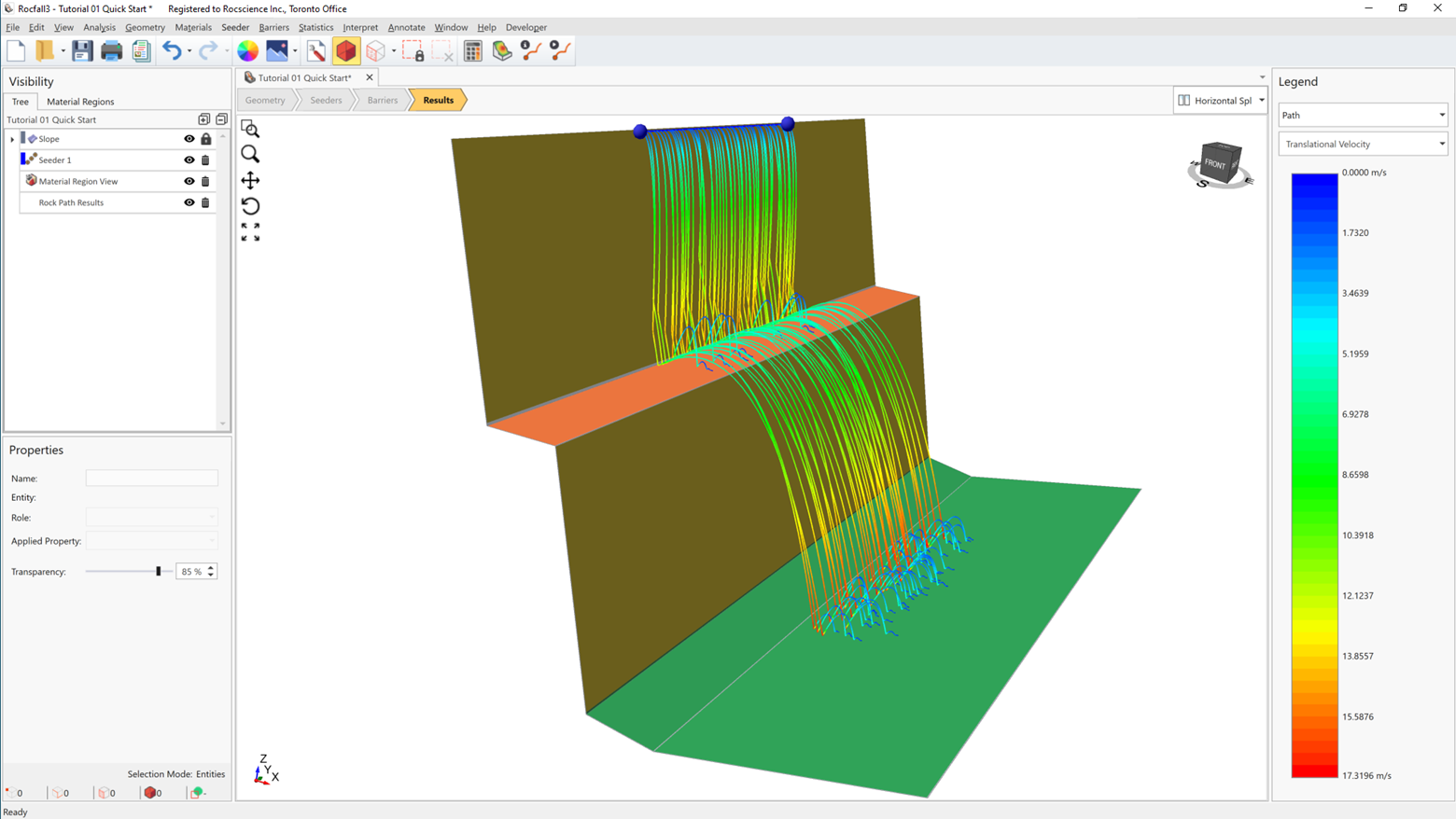
Seamless steps to import RocFall3 files into RocFall2
- Export 2D sections to RocFall2 from RocFall3 using the Section Creator tool to create a 2D section through the 3D model.
- Either interactively place the section through the 3D model or use exact locations by typing in a point on the section and the strike of the section.
- Then, simply select export this section. If you have RocFall2 installed on your computer, the model with all associated material assignments and properties will be opened automatically.
- Simply click the results button to see the 2D equivalent analysis.
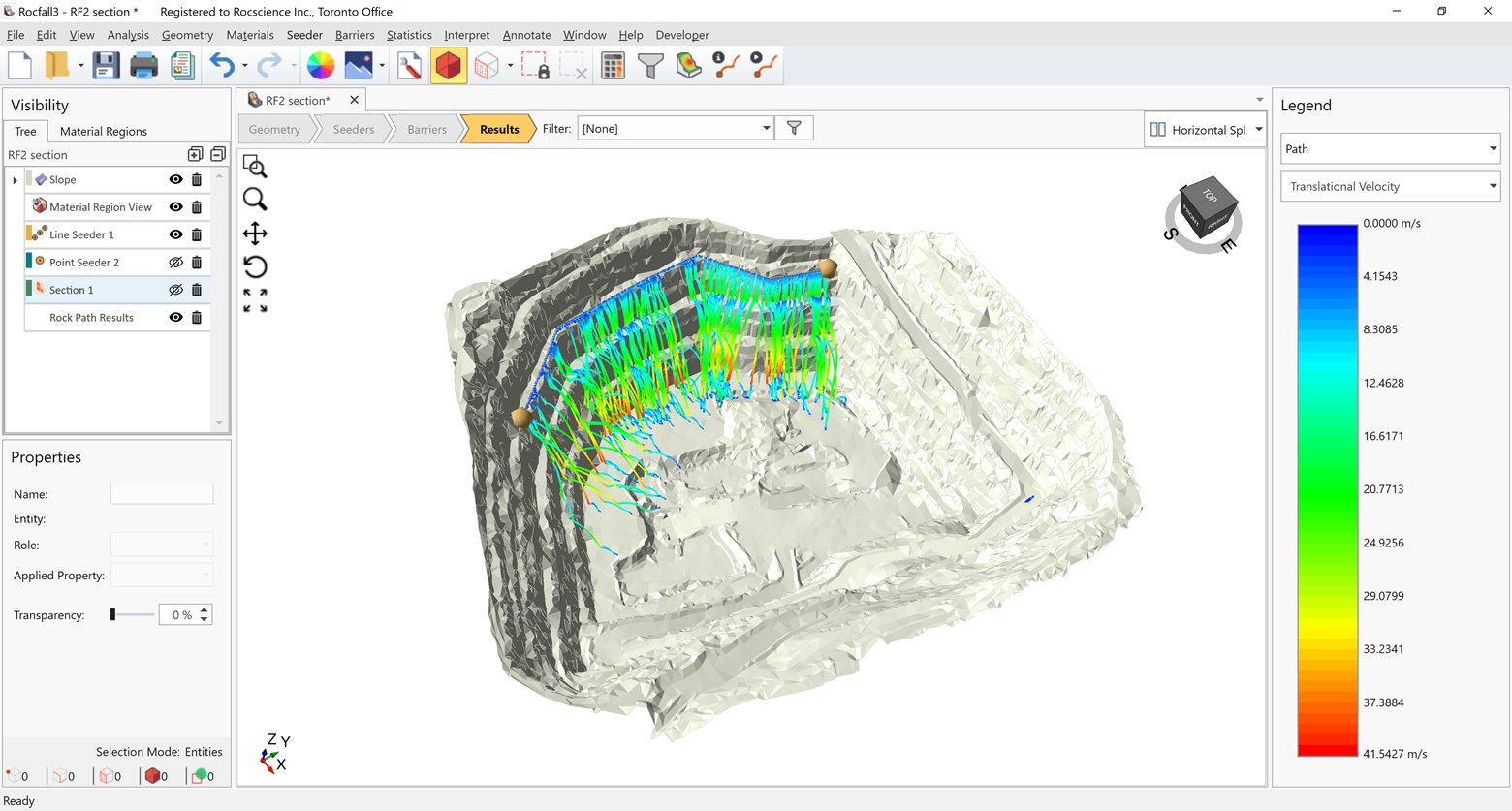
Use the Section Creator tool to create the 2D section through the 3D model
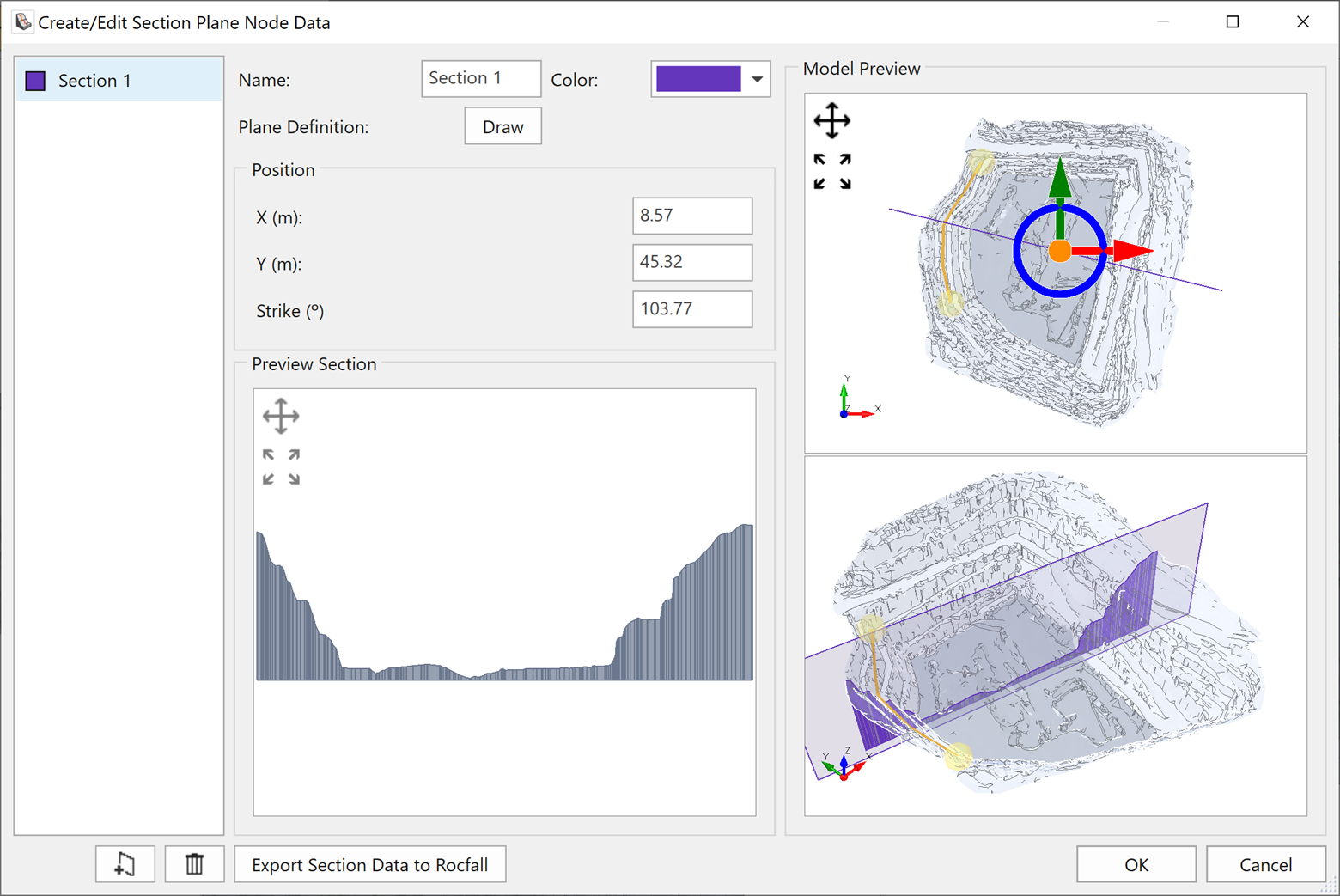
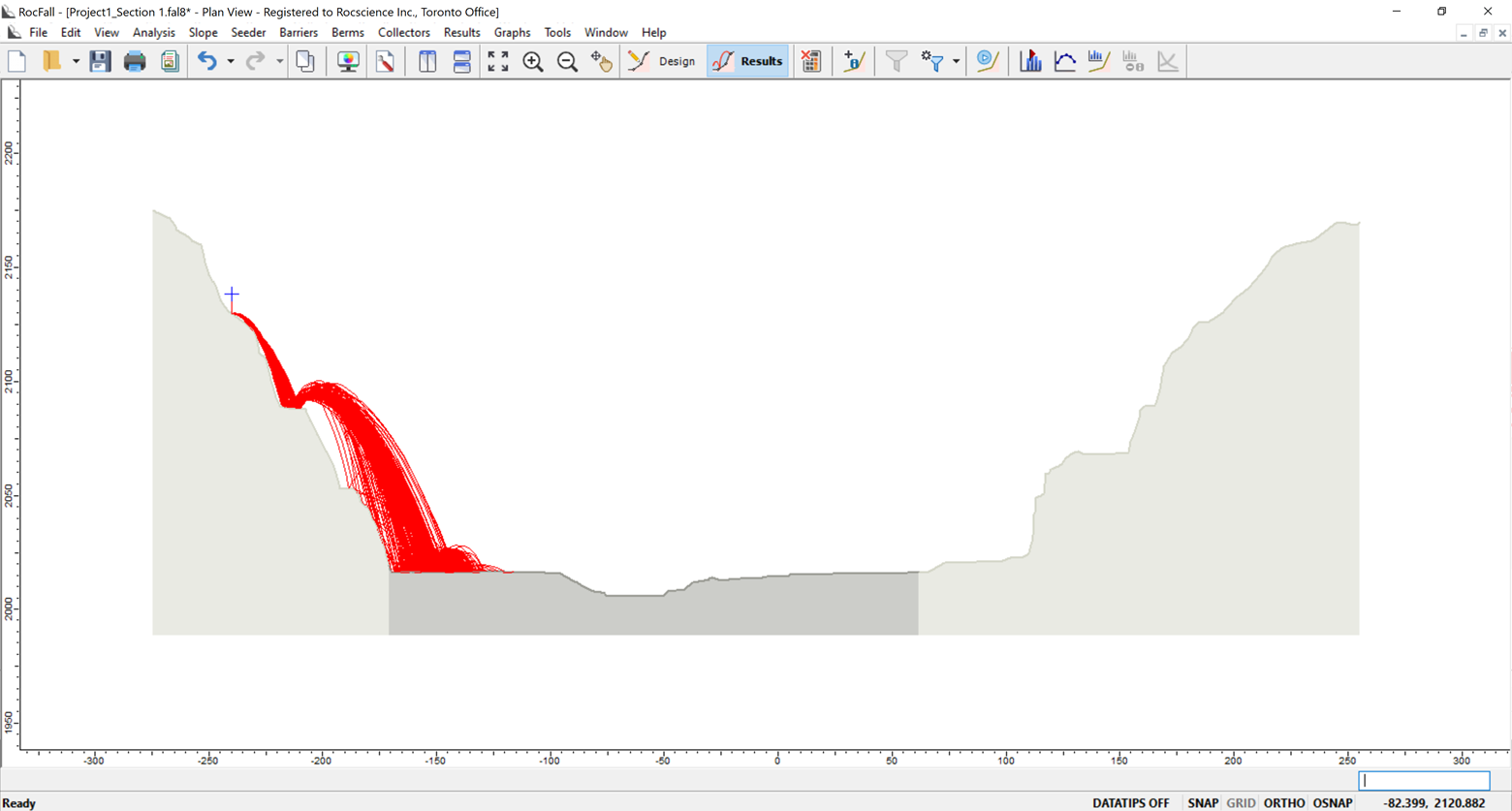
June 2020
Added Detection of Rocks Penetrating the Slope for Rigid Body Trajectory cases without Forest Damping
RocFall2 is a 2D statistical analysis program designed to assist with assessing slopes at risk for rockfalls. The program lets you explore the energy, velocity, and bounce height of falling rocks. It also lets you model remedial measures like barriers, which can be custom-defined or selected from one of the predefined barriers.
Speaking of bouncing rocks, this month RocFall2 includes a new enhancement that will add some bounce to your step. This latest Maintenance+ update includes added detection of rocks penetrating the slope for Rigid Body trajectory cases without Forest Damping. This occurs if an earlier intersection between the rock and the slope was not detected (i.e., missed intersection). If this does occur, the path will be removed from the results.
December 2019
Addition of Impact Energy Percentile Design Parameter, and More
New in RocFall2 is the addition of PFEIFER ISOFER barriers, a new impact energy percentile design parameter, and support for the placement of barriers on berms.
Rocscience has worked with PFEIFER ISOFER, an international expert in rockfall protection, to incorporate specifications data for PFEIFER ISOFER rockfall barriers into RocFall2. In addition to the numerous pre-defined barriers already available in the RocFall2 Barrier Design Library—Geobrugg, Maccaferri, and Trumer Schutzbauten—users can now select from various pre-defined PFEIFER ISOFER barriers.
The addition of these pre-defined barriers to the RocFall2 Barrier Design Library, with associated properties and MEL/SEL test data, significantly enhances the program’s barrier analysis capabilities and improves its rockfall mitigation tools.
The new RocFall2 also boasts the addition of a new barrier parameter. In addition to Separation Distance, users can now specify an Impact Energy Percentile to generate a Barrier Report for any pre-defined barrier using the Non-Factored Method.
Also new is support for the placement of barriers on berms. Barriers and berms can now be designed in conjunction. A barrier can be placed on top of a berm in two ways:
- Placing a berm on the slope using the Add Berm option
- Drawing a barrier on the berm using the Add Barrier option
Finally, users have more tools to filter, analyze, and design with greater flexibility. Various UI improvements have been made to Endpoint Location, Envelope, and Distribution graphs, such as the ability to toggle End Reasons, Seeders, Rock Types, and Rock Shapes. And the user can now choose to record multiple impacts or just the first impact on Collectors from each rock path.
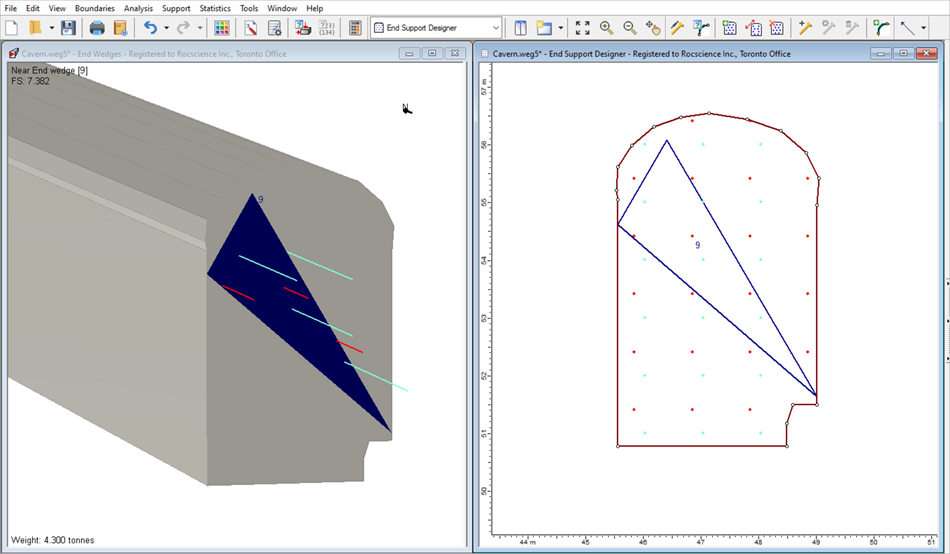
June 2019
PFEIFER ISOFER Rockfall Barriers
Rocscience is excited to announce the addition of PFEIFER ISOFER rockfall barriers in RocFall2. The addition of these pre-defined barriers to the RocFall2 Barrier Design Library, with associated properties and MEL/SEL test data, significantly enhances the program’s barrier analysis capabilities and improves the accuracy of its rockfall mitigation tools.
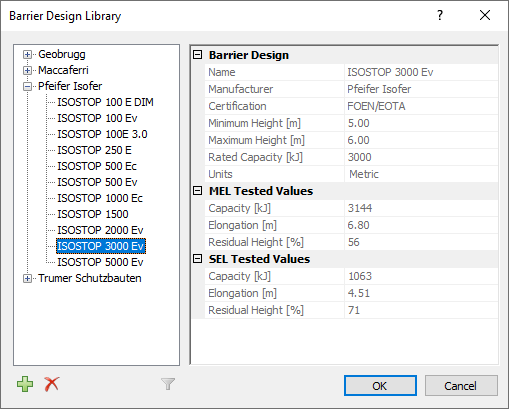
PFEIFER ISOFER AG is a recognized expert in technical protection against natural hazards, a safety issue in all mountainous regions. As pioneers, PFEIFER ISOFER first specialized in protective systems 30 years ago. Today, with the experience of over 1000 rockfall protection projects, the company offers a comprehensive range of products that extends from certified barriers to customized solutions.
The headquarters in Switzerland develop state-of-the-art, technologically exemplary protective systems that are delivered all over the world. PFEIFER ISOFER offers their customers' needs-based rockface covering systems and specialized barriers for protection against rockfalls, avalanches, or mudflows. The barriers are quality-certified according to the strict criteria of the Swiss directive on type testing as well as the European directives ETAG027 and EAD 340059.
The expertise of PFEIFER ISOFER in the field of effective and efficient flexible rockfall protection systems is based on more than 30 years of full-scale field testing on more than eight test sites covering various testing conditions. PFEIFER ISOFER protection systems cover impact energies ranging from 100 to 5,000 kJ. Special conditions are also met, for example, the 100-kJ system that doesn’t need any additional rope anchors apart from the post fixation.
September 2018
Added Geobrugg Rockfall Barriers
Rocscience is excited to announce the addition of Geobrugg rockfall barriers in RocFall2 2019. The addition of these pre-defined barriers to the Barrier Design Library, with associated properties and MEL/SEL test data, significantly enhance RocFall2’s barrier analysis capabilities and improve the accuracy of its rockfall mitigation tools.
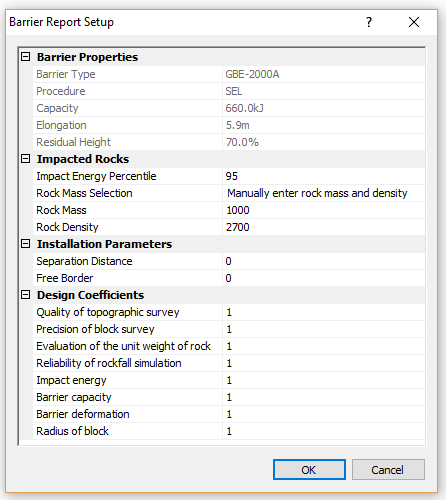
Based in Switzerland, Geobrugg manufactures rockfall protection barriers that combine practical solutions with the latest technology in high-tensile steel wire meshes. Geobrugg barriers are known for setting the benchmark for protection, ease of installation, and durability. They’re designed to conserve materials and protect the environment and have sufficiently low weight to enable easy installation in all locations.
All Geobrugg barriers meet the testing and certification requirements of ETAG 027, Guideline for European Technical Approval of Falling Rock Protection Kits, published by the European Organization for Technical Approvals. ETAG 027 is the most widely implemented and only internationally recognized certification for rockfall catchment fences.
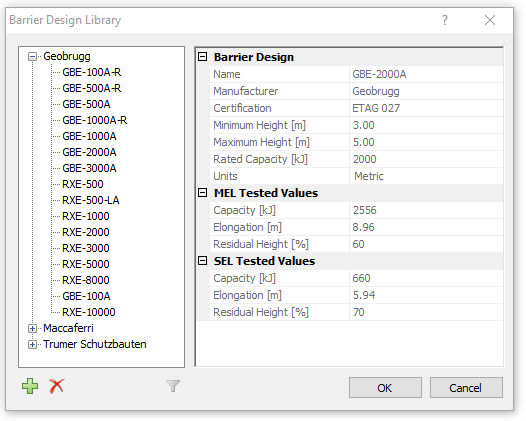
Extensive 1:1 field tests conducted according to the most demanding methods in vertical free fall have proven the performance of Geobrugg barriers, most of which bear the CE mark indicating conformity with health, safety, and environmental protection standards for products sold within the European Economic Area.
Geobrugg GBE barriers offer high efficiency and cost-effectiveness and meet the highest safety standards for withstanding impact energy levels of up to 3,000 kJ. Their low weight and low anchor forces mean they can be delivered to construction sites preassembled for quick and cost-effective installation.

RXE barriers have an energy absorption capacity of up to 10,000 kJ, equal to a weight of 25 tons traveling at over 100 km/h—the world’s strongest rockfall protection barrier. The barrier’s low deflection allows its construction in the immediate vicinity of infrastructures, making it the only flexible rockfall barrier that can replace conventional dams such as those built near traffic routes.
For many years, Geobrugg engineers have successfully used RocFall2 to simulate rockfall energy and trajectory in order to optimize the energy level range of their products. Rocscience is pleased to expand this relationship by giving our customers access to the highest standards in barrier test data available to generate best-in-class barrier analysis they can count on.
New Earth Berms
At the top of the list is the addition of earthen berms as a new rockfall mitigation tool that can be used in conjunction with barriers in analyzing rockfall risk. With the new Berm Designer, users can add triangular and trapezoidal berms to their slope models as well as create custom berms by specifying coordinates or importing them from .csv or .dxf files.

The new berms behave similarly to slope materials with normal and tangential restitutions and friction angles or like barriers with infinite capacity.
Enhanced Barrier Analysis
Overall barrier analysis has been enhanced with the following additions and improvements:
Added Geobrugg Barriers. Geobrugg pre-defined rockfall barriers have been added to the Barrier Design Library with associated properties and MEL/SEL test data. All Geobrugg barriers have met the testing and certification requirements of ETAG 027, the most widely implemented and only internationally recognized certification for rockfall catchment fences. Learn more about Geobrugg barriers.
New Design Guidelines/Checks. Two new design guidelines/checks have been added—ONR 24810 Austrian guidelines and a new series of unfactored checks.
New Impact Angle Plotting. Impact angle plotting has been added to barriers and collectors to further improve analysis functionality.
Improved Geometry Import/Export Functionality. All geometry can now be imported (not just slopes) and rock paths can now be exported in .dxf files.
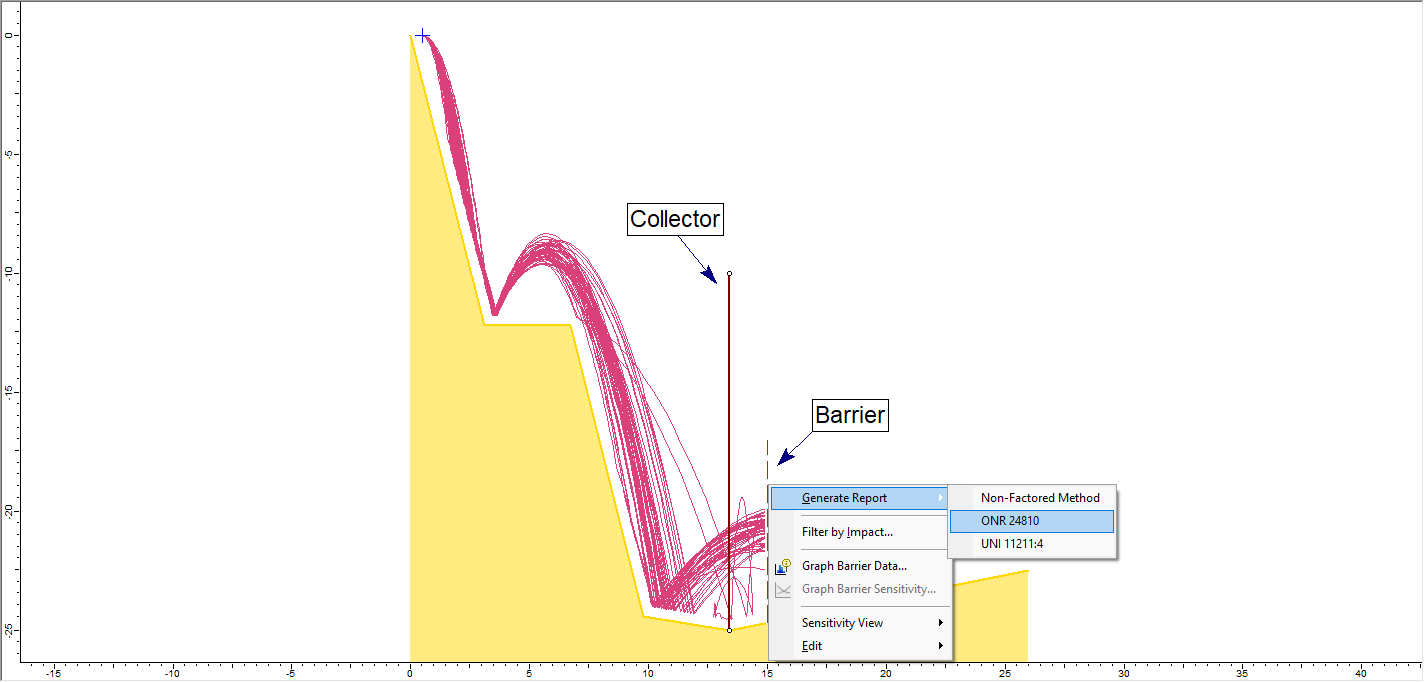
Learn RocFall2
Explore the RocFall2 user guide for in-depth instructions on how to use the program and visit our library of learning resources, including case studies, past webinars, and articles, designed to expand your geotechnical knowledge and help you get the most out of your analysis.
